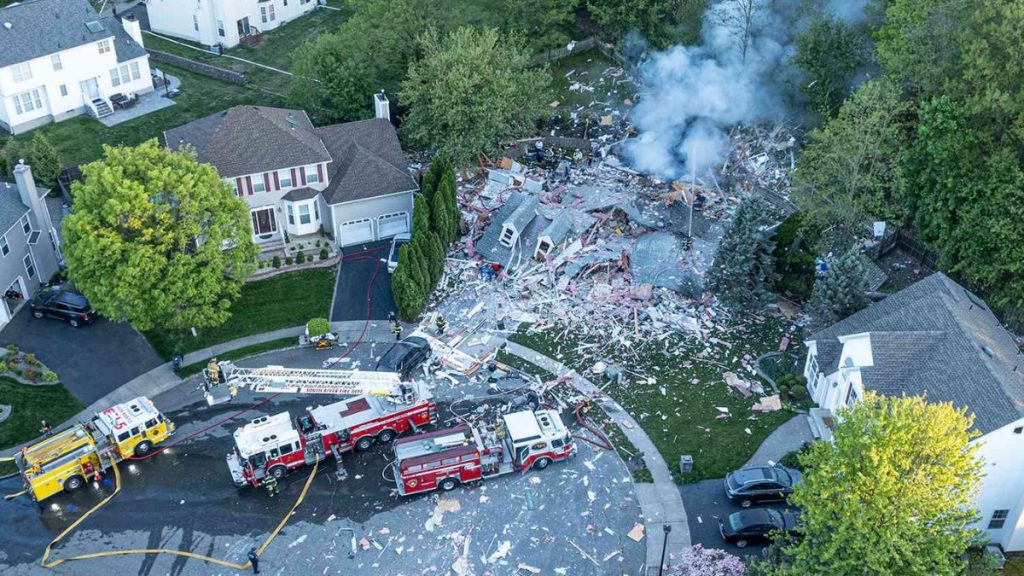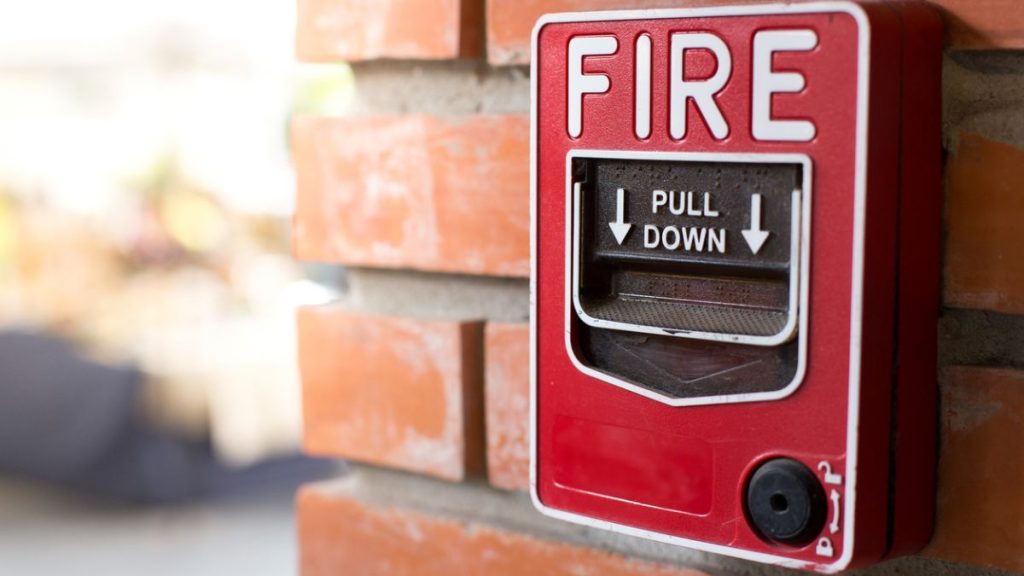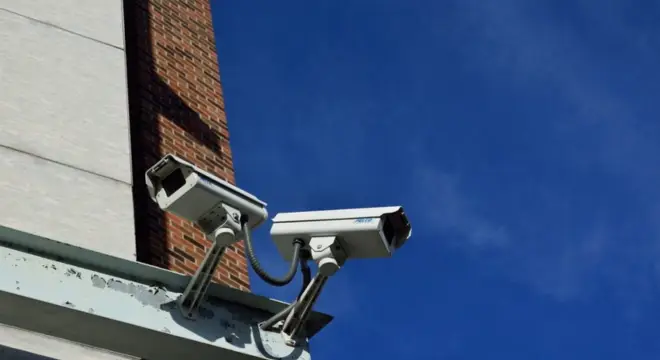Explosion Rocks NJ Neighborhood – How Smart Detectors Could’ve Made a Difference
One moment, everything was normal. The next, a New Jersey home was reduced to rubble—its explosion killing two people and shaking the neighborhood. Events like this aren’t just shocking; they’re a wake-up call for every homeowner.
While we often worry about break-ins or natural disasters, the dangers that lie inside our homes—like gas leaks and outdated systems—are just as deadly, and often more overlooked. This tragedy highlights a crucial reality: even our safest spaces can turn catastrophic without the right security and infrastructure in place.
So the real question is—how safe is your home, really?
Common Causes Behind Sudden Home Explosions
Home explosions don’t happen without warning. But the signs are usually missed—either because homeowners aren’t aware of them, or because key systems in the house are left unchecked for years.
Some of the most common causes include:
- Gas Leaks: Faulty pipelines, worn-out gas fittings, or loose connections behind appliances like stoves and heaters can slowly release gas into enclosed areas. One spark is enough to ignite an explosion.
- Old Electrical Wiring: Homes built before the 1980s may have outdated electrical systems that are prone to short circuits and overheating, especially when overloaded with modern devices.
- Improper Ventilation: Appliances like gas water heaters need proper airflow. A lack of ventilation can lead to dangerous gas build-up inside small rooms or basements.
- Flammable Storage: Keeping chemicals, gasoline, or even paint thinner in poorly ventilated areas (like garages or sheds) significantly increases explosion risk if temperatures rise or if there’s a nearby electrical short.
These factors are especially common in older homes or in houses that haven’t undergone recent safety inspections or upgrades.
Why These Disasters Keep Happening in 2025
Despite advancements in home safety, these tragic incidents still occur—often in suburban neighborhoods where homes look stable from the outside but hide years of infrastructure neglect inside.
Here’s why:
- Aging Infrastructure: Many U.S. homes are over 40 years old and were built under outdated safety codes. Unless they’ve been remodeled with modern safety systems, they’re vulnerable.
- Missed Inspections: Homeowners may skip annual inspections due to cost, lack of awareness, or because they’ve never faced a visible problem—until it’s too late.
- Absence of Smart Detection Devices: Low-cost but life-saving tools like natural gas detectors or carbon monoxide alarms are still missing in many homes, especially rentals.
- Ignored Warning Signs: Subtle cues—like a rotten egg smell (gas leak), unexplained high energy bills, or discolored electrical outlets—are often brushed off instead of taken seriously.
These oversights make homes ticking time bombs—safe for now, until something finally gives.
When Home Security Is More Than Just Locks and Alarms

Too often, homeowners focus only on external threats—break-ins, trespassing, package theft—while internal risks like gas leaks or infrastructure faults remain invisible until it’s too late. Modern home safety must go beyond traditional locks and cover environmental hazards that could cause massive destruction from the inside out.
This becomes even more critical when real-life incidents underline the importance of preventive measures. One such case was recently reported in New York Post, where an unexpected explosion led to a tragic loss of life and property. Situations like these aren’t isolated—they highlight systemic vulnerabilities in our everyday living spaces.
The lesson? It’s not just about security cameras or smart locks anymore. Protecting your home starts at the structural and utility level—with sensors, inspections, maintenance routines, and safe building practices all playing a part.
Due to shifting government policies, many experts are warning that Trump’s new tariffs could significantly impact construction costs across the country.
How to Prevent Home Explosions: Practical Safety Steps
While incidents like the one in New Jersey are tragic, they are also preventable. Taking a few deliberate safety steps can dramatically reduce the risk of an explosion inside your home.
Here’s what every homeowner should do:
- Install Smart Gas, Smoke & CO Detectors: Devices like natural gas detectors, carbon monoxide alarms, and smart smoke sensors alert you in real time—often before danger is visible. Many models can even send alerts to your phone.
- Schedule Annual Inspections: Get your gas lines, appliances, and electrical systems inspected by certified professionals every year. Even if your home feels “new,” unseen wear and tear could still pose a threat.
- Upgrade Old Appliances: Outdated gas stoves, water heaters, and furnaces should be replaced with newer, safer models that include auto shutoff features and smart integration.
- Keep Ventilation Clear: Ensure that your gas-powered appliances have proper airflow. Avoid blocking air vents or closing off utility rooms too tightly.
- Use Fire-Retardant Materials: Especially if you’re doing renovations, opt for flame-resistant insulation, wiring sleeves, and even paint. It might cost a bit more—but could save your entire home.
Have you ever checked your home for hidden safety risks? Tell us what safety devices you already use—or what you think every home should have—in the comments below!
What Building Codes and Policies Are Designed to Protect You?
Most homeowners aren’t fully aware of the local or federal safety codes that govern residential infrastructure—and that can be dangerous. Your safety doesn’t only depend on what you buy or install at home, but also on how your home was built, inspected, and maintained according to government standards.
Here’s what matters in 2025:
- Gas Line Regulations: Local building codes often require shutoff valves and regular pressure checks, but enforcement varies by state. Always ask for an inspection if buying an older home.
- Mandatory Detector Laws: In many states, having CO and smoke detectors is not just smart—it’s legally required. Some areas now also recommend natural gas leak detectors.
- Permits for Major Renovations: If you’re remodeling a kitchen or installing new gas appliances, permits ensure safety measures are met. Skipping this step can void insurance coverage.
- Energy-Efficiency and Smart Home Incentives: Certain states offer rebates or tax benefits for installing smart home safety systems, especially those integrated with environmental monitoring.
It’s wise to consult your local housing authority or a certified inspector to verify whether your home meets the latest standards—or if it’s due for upgrades that could literally save your life.
Home Upgrades That Can Prevent Disasters

If you’re serious about securing your home—not just from theft, but from hidden, life-threatening risks—these upgrades should be your next move:
- Smart Safety Detectors: Choose detectors that monitor gas, smoke, and carbon monoxide in real-time. Many sync with your phone and issue voice alerts inside the home.
- Automated Gas Shutoff Valves: These systems detect leaks and shut off gas lines automatically. They’re a must-have in homes with aging infrastructure.
- Reinforced Piping & Wiring: Older homes often use outdated materials that degrade over time. Invest in high-quality, code-compliant replacements to prevent sparks, pressure failures, or leaks.
- Smart Home Integration Panels: Centralized systems let you monitor security cameras, environmental sensors, fire alerts, and energy usage from one dashboard.
- Proactive Maintenance Schedules: Set annual reminders for HVAC, gas line, and electrical inspections. Preventive care costs less than repairs—or worse, reconstruction.
Small changes add up to major protection. And in a world where disasters can strike silently from within, the smartest thing a homeowner can do is prepare in advance.
Conclusion
Tragedies like home explosions remind us that safety isn’t just about locking doors or installing alarms—it’s about understanding and managing the risks hidden in our infrastructure. From faulty gas lines to outdated building codes, one oversight can lead to irreversible damage.
The good news? You don’t have to live in fear—you just have to live prepared. By investing in smart detectors, routine inspections, and policy-aware upgrades, you protect not just your property but also the people who matter most.
Let your home be more than just a shelter. Make it secure, smart, and resilient.
Found this guide helpful? Follow us for more home safety insights, practical upgrade tips, and real-world alerts that protect your family and property.
Disclaimer: This article is intended for informational purposes only and should not be considered professional safety, construction, or legal advice. Always consult certified home inspectors, contractors, or your local housing authority for personalized guidance and compliance with local laws and regulations.


